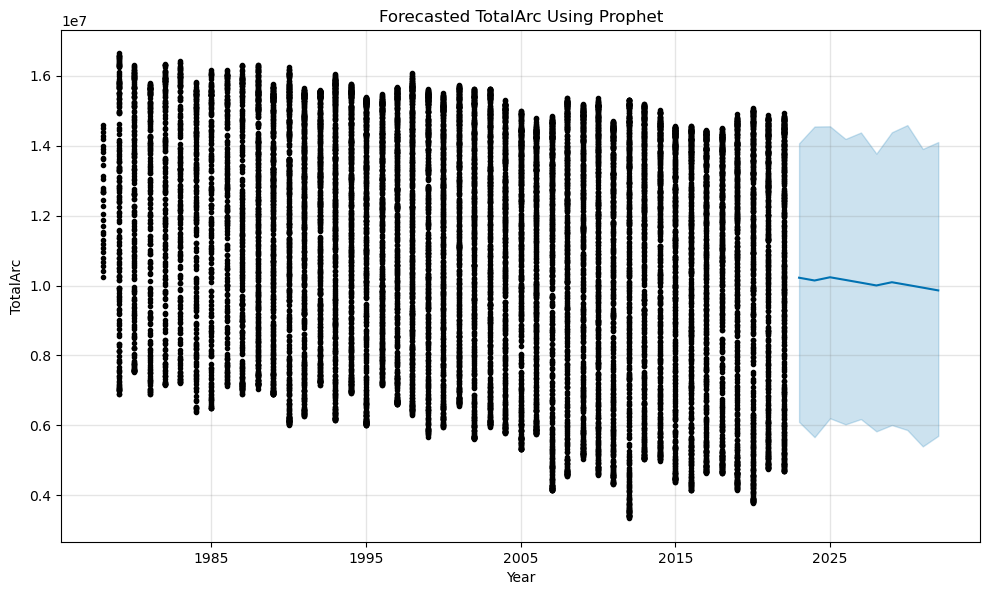Trends in Sea Ice Extent
Declining Trends: The data likely show a declining trend in sea ice extent over the years, which is a strong indicator of global warming. The reduction in sea ice is one of the most visible effects of climate change in the Arctic.
Seasonal Variations: There may be significant seasonal variations in sea ice extent, with minimum extents typically occurring in September and maximum extents in March. Tracking these seasonal changes helps in understanding the broader impact of warming temperatures.

Forecasted TotalArc Using Prophet